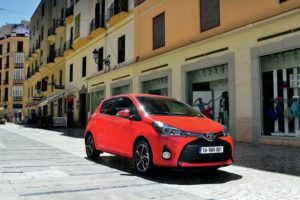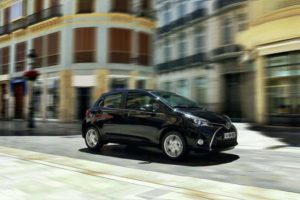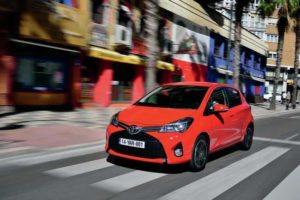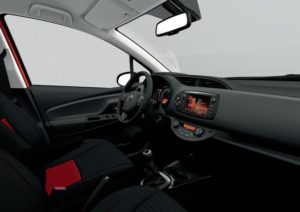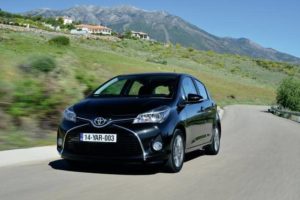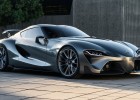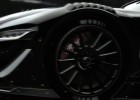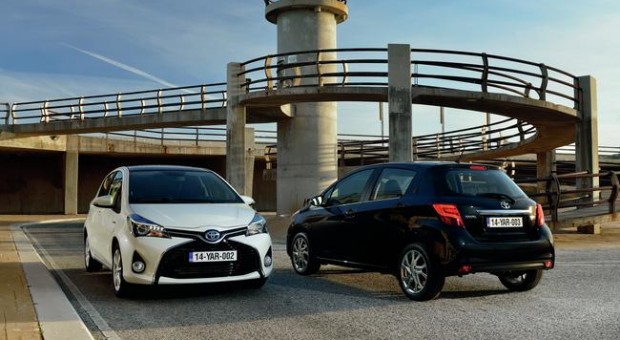
All-new 2014 Toyota Yaris, made in Europe, for european customers
The launch of the new Yaris 2014 represents an important event in the history of Toyota Motor Europe. In fact, for the first time, the Product Planning Department, the Research and Development Division based in Brussels and the European Design Centre at Sophia Antipolis near Nice have been working hand in hand to develop a product that goes way beyond Europe’s borders.
The Yaris remains available with a 1.0 and 1.33 petrol powertrain, a 1.4 D-4D and finally the hybrid, which today already makes up for almost 1 out of 3 sales.
More than 84% of the Yaris models produced at Valenciennes in northern France is for export. Not only to 42 countries in Europe, but also to the Unites States, Canada and Puerto Rico. In 2014, 26,000 Yaris models will be set to cross the Atlantic, accounting for 12% of the production.
The flagship product of Toyota’s European range, the Yaris has benefited for its restyling from a particularly large investment (85 million euros). 576,000 hours of R&D have been dedicated to it, more than 1,000 new parts have been designed and Toyota Motor Europe contributed 75% towards its creation, a figure to be compared to the 25% European contribution invested at the model’s launch in 2011.
Building on the features that have made the model a success since its launch, particularly the unique character of what it has to offer – the hybrid powertrain which makes up for almost 1 in 3 sales, the multimedia equipment or the rear camera – the Product Planning Department team has worked to strengthen the qualities and character of the 2014 Yaris.
Consequently, the highly distinctive exterior of the new, 2014 Yaris features an even stronger, more dynamic execution of Toyota’s bold, Under Priority frontal design language with Keen Look detailing.
The narrow upper- and large, trapezoidal lower grilles which hallmark Toyota’s Under Priority design now merge at the logo to form a powerful cross-shaped structure.
The logo is underscored by a chrome trim bar which runs through the length of the upper grille into new, Keen Look headlamp clusters, tying the frontal elements together with a powerful, horizontal emphasis of vehicle width.
The headlamp clusters themselves incorporate new projector lamp technology for both high and low beams, and LED daytime Running Lights (DRL).
The 2014 Yaris range offers 4 powertrains, two petrol, one diesel and one hybrid. The latter, which already accounts for a third of this model’s sales, was adapted to comply with the Euro 6 Standard and has benefited from adjustments that have now made its C02 emissions even lower, 75 g/km as opposed to 79. Extremely economical (less than 3.3l/100) and clean (virtually zero nitrous oxide and particulate emissions), this powertrain offers unique qualities within the B-segment. The hybrid Yaris stands out for its silent running, comfort and easy handling, particularly in urban areas where the hybrid system allows the car to run solely in electric mode or with a limited – and therefore silent – use of the combustion engine. The automatic transmission ensures a smooth drive without any jerkiness, giving a comfortable and reassuring driving experience, both for the driver and his passengers.
The 1.33 petrol and 1.4 diesel engines have benefited from secondary modifications aimed at reducing noise and vibration: firstly, by fitting a torque rod and secondly, by providing better insulation for the exhaust system.
As for the 3-cylinder 1.0 petrol engine, it has undergone a major revamp with a view to improving its performance, reducing its emissions and its noise and vibration levels. In compliance with the Euro 6 Standard, it achieves a level of thermal efficiency – the part of the energy contained in the fuel, which is converted into mechanical energy – of over 37%, which is an excellent result among mass-produced petrol engines that on average have a thermal efficiency of between 30 and 35%. The CO2 emissions of the 1.0 version have thus been reduced from 110 to 99 g/km and achieve 95 g/km with the Stop & Start system.
To achieve this, engineers have sought above all to optimise the weight/power ratio. From this aspect, the combination of the cylinder and the exhaust manifold head has reduced weight and improved compactness.
In order to reduce consumption while still maintaining performance, the compression ratio has been increased to 11.5:1, the intake ports and pistons have been redesigned to increase the tumble effect (vertical swirl in the combustion chamber) and piston cooling has been increased to delay knocking. Recirculation of the exhaust gas has been increased to promote combustion speed and reduce pumping losses, while the EGR valve now operates in conjunction with the VVT-i distribution system, the latter having also been adapted to suit the engine’s new characteristics.
Photo gallery:
Source, please read more.

